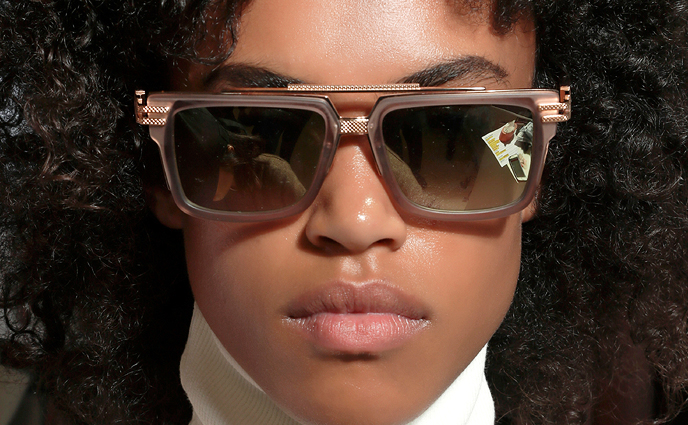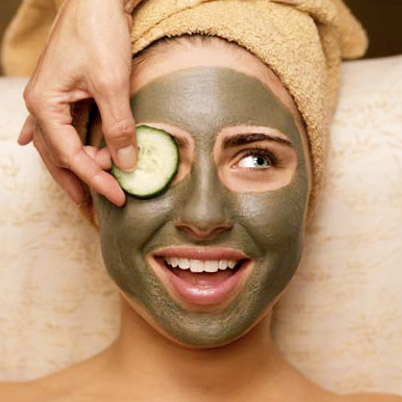Heat and humidity, be damned: After what goes down as the worst winter in our memory, we're spending every last second outdoors this summer. And we're not even going to complain about the furnace-like temperatures or the melt-in-a-puddle mugginess that makes us feel less beach babe and more swamp monster.
Because here's the thing: Looking effortlessly fresh takes just a tad more work than we'd ever admit to our dudes (who think we wake up and go to bed smelling like peonies). But even sky-high mercury doesn't have to be a beauty deal breaker. Here, how to fend off the beauty bummers that come with extra time spent frolicking in the sun.
Image Source: Because I'm Addicted
It's not your imagination (or just a Violent Femmes song): Blisters really do occur more often in the summer. Higher temperatures make our feet swell and sweat, which means more friction between tender toes and those killer gladiator sandals.
Before you slip into strappy sandals, try applying a blister prevention stick like Sole Goddess Blister Protection Foot Balm, $18.75, to areas where you usually get blisters -- the bottom of your soles, around ankles where ankle straps hit and on your big and pinky toes. These products glide on like a deodorant and reduce your risk of being rubbed raw.
If your feet have already succumbed to blisters, don't -- we repeat -- don't pop them. According to Phil Vasyli, a podiatrist based in Sydney, Aus., this disrupts the healing process and makes them susceptible to infection. Instead, cover existing blisters with breathable gauze and let them dry up and disappear on their own. Image Source: Trend Council
Before you slip into strappy sandals, try applying a blister prevention stick like Sole Goddess Blister Protection Foot Balm, $18.75, to areas where you usually get blisters -- the bottom of your soles, around ankles where ankle straps hit and on your big and pinky toes. These products glide on like a deodorant and reduce your risk of being rubbed raw.
If your feet have already succumbed to blisters, don't -- we repeat -- don't pop them. According to Phil Vasyli, a podiatrist based in Sydney, Aus., this disrupts the healing process and makes them susceptible to infection. Instead, cover existing blisters with breathable gauze and let them dry up and disappear on their own. Image Source: Trend Council
Tropical flowers aside, the things that thrive in warm, moist environments rarely smell good. And your sweaty, summer feet are just that -- the perfect breeding ground for stinky bacteria. Sure, sandals let more air in then sneakers do. But even if your espadrilles aren't closed-toed, sandals can get swampy and your feet are still at risk of developing a stench at best or a fungal infection at worst.
Luckily, you don't have to resort to wearing socks with your summer sandals. Instead, Vasyli recommends avoiding shoes with plastic soles that trap heat and sweat, and focusing on keeping your feet dry. Wipe them down before putting your shoes on, and spray the soles with deodorant, like Suave 24 Hour Protection Anti-Perspirant Deodorant Aerosol Spray, $3.59, before every use. Or, sprinkle the soles of your flats and sandals with baby powder to keep the area dry and fresh.
If your sandals are already stinky (and you can't throw them in the washer), scrub them with baking soda or laundry detergent using an old toothbrush and let them dry completely in the sun before slipping them back on. Image Source: Getty Images
Luckily, you don't have to resort to wearing socks with your summer sandals. Instead, Vasyli recommends avoiding shoes with plastic soles that trap heat and sweat, and focusing on keeping your feet dry. Wipe them down before putting your shoes on, and spray the soles with deodorant, like Suave 24 Hour Protection Anti-Perspirant Deodorant Aerosol Spray, $3.59, before every use. Or, sprinkle the soles of your flats and sandals with baby powder to keep the area dry and fresh.
If your sandals are already stinky (and you can't throw them in the washer), scrub them with baking soda or laundry detergent using an old toothbrush and let them dry completely in the sun before slipping them back on. Image Source: Getty Images
We're quick to sun-proof our skin and even our hair, but our manis and pedis often go unprotected. If you're working on a tan, your nails are soaking up those rays as well. According to Dr. Chynna Steele, an Atlanta-based dermatologist, heat from the sun can bake polish into your nails, leaving that sickly, yellow tint. The good news is, you don't have scurvy (as your internet search might have suggested). However, you are going to need to re-think your polish routine if you want to get rid of that cadaver-like hue.
Before putting on polish, prep nails with two layers of a base coat. Stick with lighter polish colors like nudes, beiges and ballet pinks. If you can't quite kick your Lincoln Park After Dark habit, squeeze fresh lemon onto your bare nails and let it sit for several minutes. The citrus will naturally bleach and brigthen stained nails. Buff with a dry washcloth, then massage a few drops of olive oil into your nails and cuticles to restore moisture.
Image Source: Pinterest
Before putting on polish, prep nails with two layers of a base coat. Stick with lighter polish colors like nudes, beiges and ballet pinks. If you can't quite kick your Lincoln Park After Dark habit, squeeze fresh lemon onto your bare nails and let it sit for several minutes. The citrus will naturally bleach and brigthen stained nails. Buff with a dry washcloth, then massage a few drops of olive oil into your nails and cuticles to restore moisture.
Image Source: Pinterest
Crisp, clean white is the color of choice this summer. Any other time of the year, we're more concerned about wine or spaghetti sauce spills on our favorite tee or LWD (little white dress). But once summer rolls around, there's another stain at play that our trusty stain-remover pen can't blot out: sweat stains.
Ironically, experts believe it's the sweat-stopping aluminum in antiperspirants that creates the telltale yellow pit stains. You can swap your antiperspirant for a natural deodorant, which may solve the staining issue, but not the sweating one. At the end of the day, you're going to end up with some perspiration on your clothing, so your best bet is to focus on how to remove inevitable stains.
Wash your clothing immediately after wearing them. Run water over the stained area, then slather a paste of baking soda and warm water over it. Let the paste sit for 30 minutes to an hour, then rinse and machine wash as usual. If it the stain doesn't budge, try submerging the article in a shallow bowl containing crushed aspirin and warm water. Let it sit for two to three hours, then throw it in the washing machine. Image Source: Baby Anything
Ironically, experts believe it's the sweat-stopping aluminum in antiperspirants that creates the telltale yellow pit stains. You can swap your antiperspirant for a natural deodorant, which may solve the staining issue, but not the sweating one. At the end of the day, you're going to end up with some perspiration on your clothing, so your best bet is to focus on how to remove inevitable stains.
Wash your clothing immediately after wearing them. Run water over the stained area, then slather a paste of baking soda and warm water over it. Let the paste sit for 30 minutes to an hour, then rinse and machine wash as usual. If it the stain doesn't budge, try submerging the article in a shallow bowl containing crushed aspirin and warm water. Let it sit for two to three hours, then throw it in the washing machine. Image Source: Baby Anything





